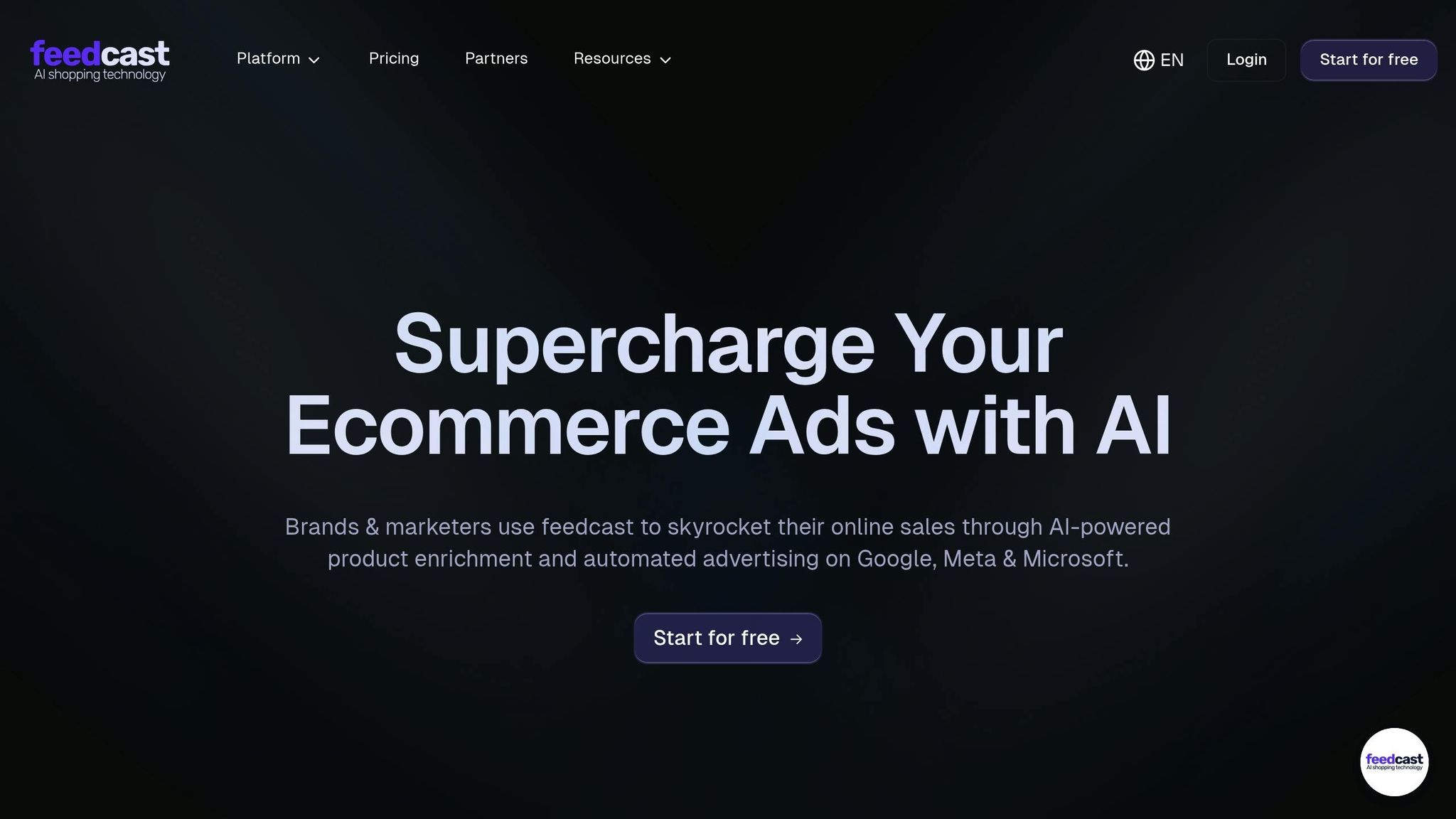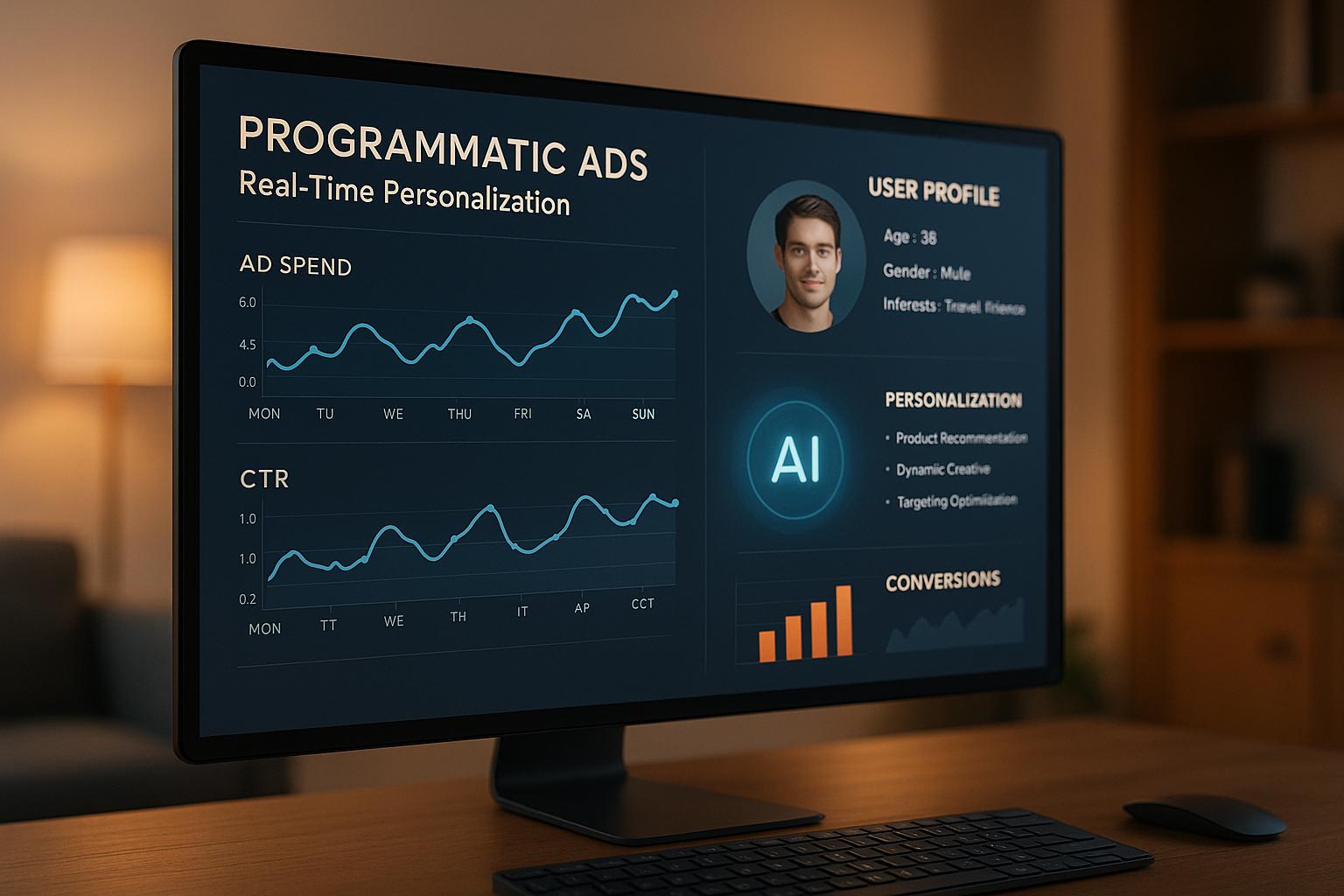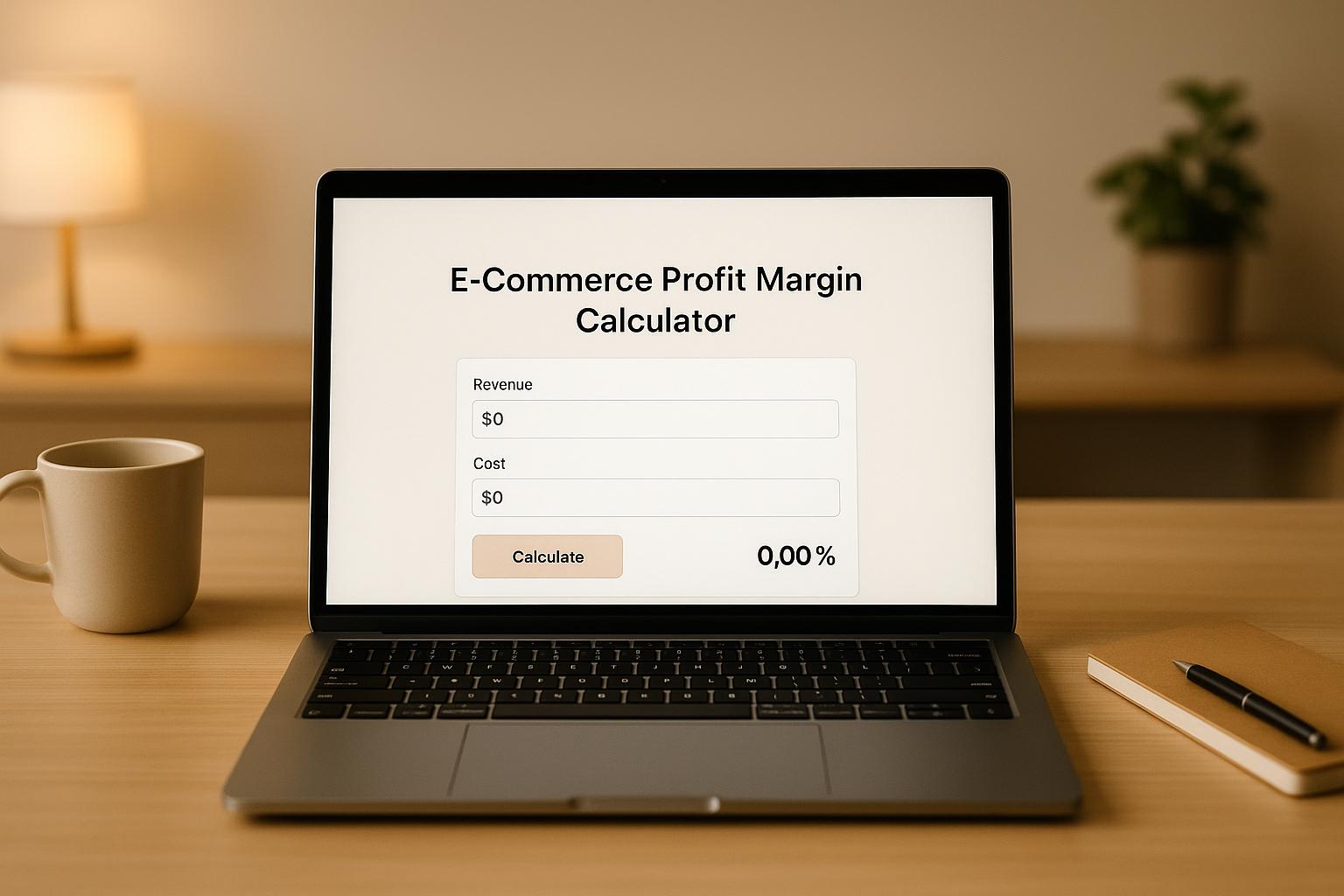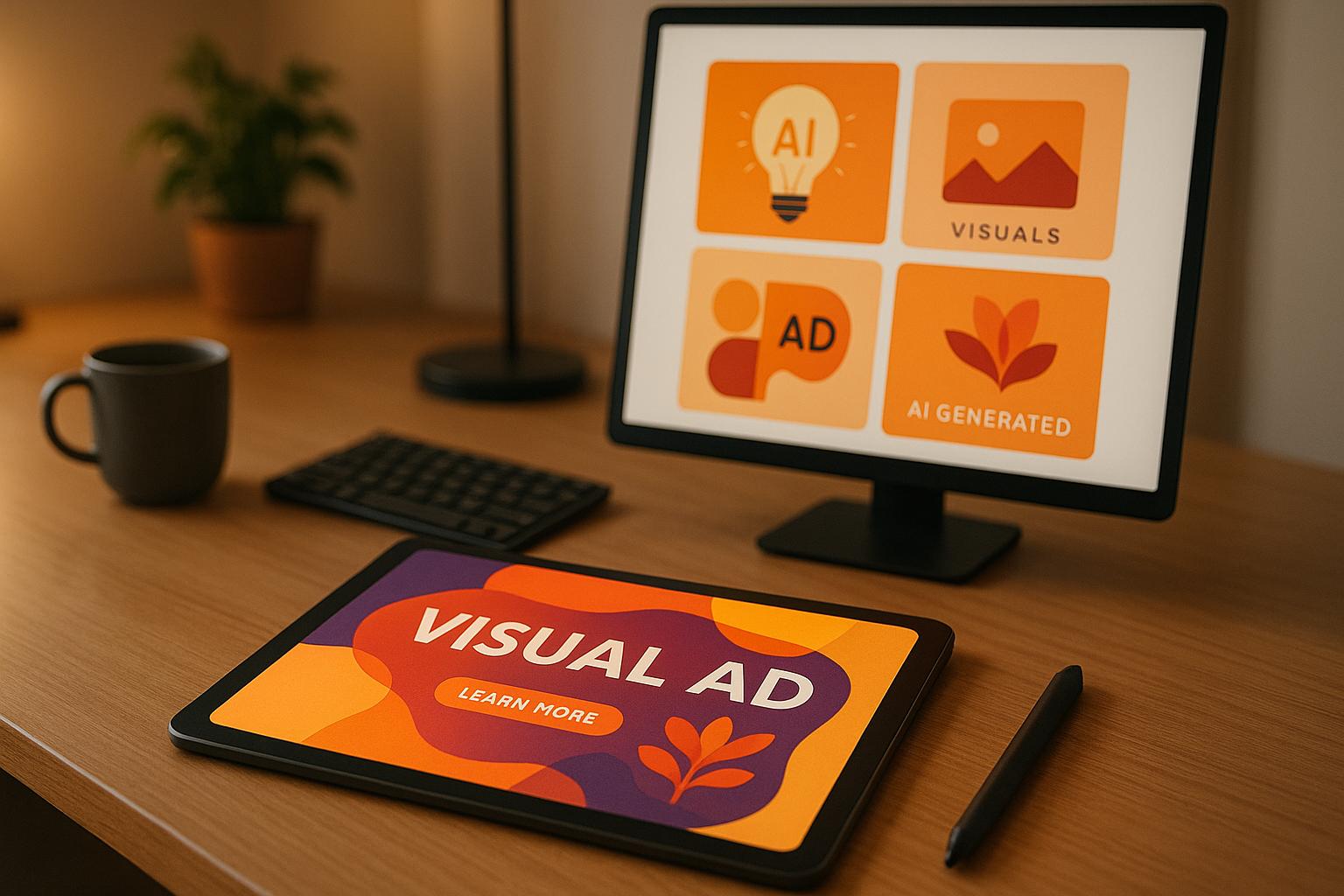How AI Improves Ad Spend Efficiency
AI is transforming e-commerce advertising by making ad budgets work harder and smarter. Here’s how it helps businesses cut waste, target effectively, and boost results:
- Smarter Targeting: AI pinpoints high-conversion audiences based on behavior, not just demographics, ensuring your ads reach the right people.
- Real-Time Adjustments: AI optimizes campaigns instantly, reallocating budgets and tweaking strategies as trends shift.
- Unified Data Insights: It bridges gaps between platforms like Google Ads and Meta, offering a clear picture of performance.
- Predictive Analytics: AI forecasts trends and customer actions, enabling businesses to stay ahead of market changes.
- Automation: Tools like Feedcast.ai simplify ad creation, product data management, and reporting, saving time and reducing errors.
For e-commerce businesses, AI isn’t just helpful - it’s a must-have to maximize ROI, reduce inefficiencies, and stay competitive.
How To Use AI For Ad Budget Optimization? - Social Media Business Playbook
Common Ad Spend Problems in E-commerce
E-commerce businesses often grapple with making their advertising budgets work efficiently. These challenges can snowball, leading to a vicious cycle where more money is spent with fewer results. The root of these issues lies in areas like targeting inefficiencies, managing multiple platforms, and accurately tracking return on investment (ROI).
Budget Waste and Poor Targeting
One major problem is ineffective targeting. Many businesses rely on broad demographic assumptions instead of focusing on actual buying behaviors. For example, a company selling premium kitchen appliances might target "homeowners aged 25-55", but overlook crucial details like recent purchase history, engagement with similar products, or life stage indicators. This approach often results in ads being shown to people who have no interest or immediate need for the product.
This lack of precision leads to wasted budgets. Money continues to flow into underperforming campaigns, while high-potential opportunities are left underfunded. Fixed daily budgets compound the problem by ignoring peak shopping times. For instance, customers might be more likely to shop during lunch breaks, evenings, or weekends - but these windows go untapped when spending is spread evenly throughout the day.
And the problem doesn’t stop at targeting. The fragmented nature of advertising platforms adds another layer of complexity.
Managing Multiple Ad Platforms
E-commerce businesses today need to advertise across several platforms like Google Ads, Meta (Facebook and Instagram), and Microsoft Ads. While this multi-platform approach is necessary, it creates operational headaches. Each platform has its own interface, reporting system, and optimization requirements, making it difficult to manage them all effectively.
The real challenge? Data from these platforms doesn’t talk to each other. Insights from Facebook campaigns don’t automatically inform Google Ads, and valuable data from Microsoft Ads remains siloed. This lack of integration makes it harder to build a full picture of customer behavior, which could otherwise improve targeting across channels.
Adding to the chaos, manually shifting budgets between platforms is slow and inefficient. By the time adjustments are made, peak opportunities may have passed. On top of that, maintaining separate product feeds, tracking codes, and conversion setups for each platform eats up time and resources - time that could be better spent on strategy and growth.
But even if businesses manage to juggle these platforms, tracking ROI accurately remains a major hurdle.
Tracking ROI Accurately
Measuring ROI is one of the trickiest aspects of e-commerce advertising. Traditional tracking methods struggle to account for the complexities of multi-channel attribution and extended conversion cycles. Privacy regulations further complicate this by limiting data collection.
Take this example: A customer sees a product on a Facebook ad, researches it on Google, and finally makes a purchase through a retargeting ad days later. Which channel deserves credit for the sale? Without advanced tracking systems, it’s nearly impossible to get a clear answer, leading to poor budget allocation decisions.
Another overlooked factor is customer lifetime value (CLV). Many businesses focus only on immediate sales, ignoring the long-term value of customers who make repeat purchases or refer others. A campaign might seem unprofitable at first glance, but if it brings in loyal customers, its long-term ROI could be much higher.
To make matters worse, each platform uses its own attribution models and conversion windows. For instance, Google Ads might report one set of conversions, while Facebook claims credit for the same sales. This conflicting data makes it nearly impossible to measure overall advertising effectiveness. Advanced tools powered by AI can help bridge these gaps by unifying data across platforms, but implementing them requires additional expertise and resources.
How AI Improves Ad Spend Efficiency
AI has transformed advertising by shifting the focus from guesswork and manual tweaks to a precise, data-driven approach. It processes massive datasets quickly, uncovering patterns and opportunities that might otherwise go unnoticed. By tackling challenges like wasted budgets and disjointed data, AI brings a more streamlined and effective strategy to managing ad spend. Here’s how its analytical, real-time, and predictive capabilities are reshaping budget allocation.
Data Analysis for Smarter Budget Allocation
AI turns raw advertising data into actionable insights, helping businesses allocate their budgets more effectively. By analyzing data from various sources, it identifies which campaigns, channels, or strategies deliver the best return on investment (ROI) [1]. But it doesn’t stop at surface-level metrics - AI dives into deeper insights, such as customer behavior trends, conversion paths, and indicators of lifetime value.
Machine learning algorithms constantly evaluate this data, spotting shifts in consumer behavior and emerging trends. This enables businesses to redirect budgets from underperforming campaigns to areas with higher potential [1]. In doing so, AI minimizes wasted spending and ensures resources are focused where they’ll have the greatest impact.
Real-Time Campaign Adjustments
AI doesn’t just analyze data; it acts on it immediately. Unlike traditional campaign management, which often relies on outdated performance metrics, AI operates in real time. It monitors campaigns across platforms, making quick adjustments to targeting, ad placements, and budget distribution as needed. This real-time responsiveness ensures budgets are always aligned with the most effective strategies [1].
This speed is especially crucial during high-stakes periods, like holiday shopping seasons or product launches, where every moment counts. AI’s ability to adapt on the fly helps advertisers maximize their impact during these critical windows.
Predictive Analytics and Machine Learning
AI’s predictive analytics take budget management to the next level by using historical data to anticipate future trends. Machine learning models go beyond basic targeting, predicting high-value customer behaviors and providing clear, data-backed strategies [1]. This eliminates much of the guesswork, saving time and reducing reliance on trial-and-error approaches.
The results speak for themselves. Advertisers using advanced analytics and machine learning see ad spend efficiency improve by over 24% [1]. This boost comes from AI’s ability to prevent budget overruns and underfunding, offering a detailed understanding of financial needs for each campaign. By connecting data from various sources, AI also provides a comprehensive view of the customer journey, leading to smarter decisions about budget allocation and more accurate attribution of results.
AI Tools and Methods for E-commerce Advertising
E-commerce businesses are rethinking advertising strategies by using AI tools to simplify audience targeting, content creation, and multi-platform management. These tools work behind the scenes to pinpoint ideal audiences, craft engaging content, and manage complex campaigns with minimal manual effort. Let’s explore how specific AI-driven methods can boost campaign performance.
AI-Powered Targeting and Remarketing
AI targeting has moved well beyond simple demographic filters. With lookalike audience modeling, AI analyzes your best customers and identifies new prospects who share similar traits. This ensures your ad budget is spent on high-potential audiences rather than casting a wide, less effective net [2].
Remarketing also gets a major upgrade with AI. Instead of generic ads for all visitors, AI creates personalized campaigns based on individual user behavior [2]. For instance, someone who abandoned their cart might see a discount offer, while a homepage browser might get a product recommendation. This tailored approach drives more conversions while avoiding wasted ad spend on disengaged users.
Automated Ad Content Creation
Producing effective ads for multiple platforms used to require hours of manual effort. Now, AI tools can generate and optimize ad creatives automatically. These tools test different formats, visuals, and copy, adjusting in real-time to improve performance [2]. They can even pull from a single product catalog to create multiple ad variations, ensuring the best-performing content reaches each audience segment [3].
The results speak for themselves. Meta's Advantage+ shopping campaigns, powered by AI, showed a 17% improvement in cost per action and a 32% boost in return on ad spend [3]. Adobe’s research adds that 34% of businesses improved personalization, and 32% expanded content creation capabilities using AI tools [3]. This automation not only saves time but also achieves levels of personalization that manual methods simply cannot match. These capabilities often integrate seamlessly with centralized management platforms.
Feedcast.ai: A Centralized Solution

Managing ads across platforms like Google, Facebook, and Instagram can be overwhelming, especially with multiple dashboards and data formats. Feedcast.ai simplifies this process by offering a single platform that uses AI to optimize every aspect of your advertising strategy.
One standout feature is its AI-powered product feed enrichment, which improves product titles, descriptions, and other details while automatically fixing feed errors. This ensures your products are displayed correctly across all advertising channels. Plus, it integrates smoothly with platforms like Shopify, WooCommerce, and PrestaShop, making it easy to import and optimize product data.
Feedcast.ai's smart targeting identifies engaged audiences for both new customer acquisition and retargeting campaigns, while its automated ad creation feature generates personalized copy tailored to each platform. This eliminates the need for manually creating multiple ad variations.
The platform also provides real-time analytics through a unified dashboard, offering a clear overview of campaigns and customizable reports. These insights help identify what’s working and what needs adjustment. By centralizing campaign management, Feedcast.ai saves time - research shows that 77% of media planners using machine learning tools gained back one to four hours per week from manual tasks [3].
Feedcast.ai offers flexible pricing, starting with a free tier for small businesses and scaling up for larger operations or agencies managing multiple accounts. As a certified Google CSS partner, it can also deliver cost savings on Google Shopping campaigns. By reducing inefficiencies and optimizing ad spend across channels, Feedcast.ai helps businesses of all sizes achieve more with less effort.
sbb-itb-0bd1697
Steps to Implement AI-Driven Ad Spend Optimization
Start integrating AI into your advertising efforts to instantly enhance efficiency. These steps provide a clear path from planning to execution, ensuring a seamless shift to AI-powered ad management.
Centralize Campaign Management
First, take stock of your current advertising platforms - whether you're using Google Ads, Meta (Facebook and Instagram), or Microsoft Ads. Managing campaigns across multiple platforms without coordination often leads to scattered data and missed chances for optimization.
To fix this, consolidate your ad accounts into a single AI-powered platform like Feedcast. By linking all your advertising accounts to one dashboard, you can easily monitor campaign performance across channels without juggling multiple logins. This unified view syncs data from every account, offering a clear picture of what's working and what isn't.
Centralizing your campaigns also simplifies budget management. With all your campaigns displayed side by side, it’s much easier to spot which channels are delivering the best return on ad spend (ROAS) and reallocate budgets accordingly. This streamlined approach lays the groundwork for deeper AI involvement, like refining product data and enabling real-time adjustments.
Use AI for Product Data Enrichment
The quality of your product data plays a huge role in ad performance, yet many e-commerce businesses struggle with incomplete or poorly optimized listings. AI-powered tools can automatically enhance product titles, descriptions, and attributes, improving both visibility and relevance.
Start by importing your product catalog into an AI-enabled platform like Feedcast, which integrates smoothly with Shopify, WooCommerce, or PrestaShop. Once uploaded, the AI reviews your product data, identifies gaps or weak points, and suggests improvements to boost search visibility and ad performance. It can even spot and fix feed errors that might prevent your products from showing up in ads.
Make it a habit to review these AI-driven suggestions regularly. As the platform gathers more performance data, its recommendations adapt, offering insights tailored to your products and audience. Better product data not only improves ad relevance but also sharpens your targeting, making your campaigns more efficient.
Use AI for Real-Time Adjustments
Manual campaign adjustments often lag behind changes in performance. AI tools, on the other hand, monitor key metrics - like click-through rates, conversion rates, and cost per acquisition - in real time and make adjustments instantly.
Set up automated monitoring so the AI can handle tasks like adjusting bids, reallocating budgets, and fine-tuning targeting on the fly. This real-time optimization ensures your campaigns stay effective, even as market conditions shift.
For example, Meta’s internal research revealed that advertisers using AI-powered Advantage+ shopping campaigns saw a 17% improvement in cost per action and a 32% boost in return on ad spend compared to traditional manual management [3]. While the AI manages the day-to-day tweaks, you can set alerts for major performance changes to maintain strategic oversight. This combination of automated precision and human supervision ensures your campaigns remain aligned with your goals.
Use unified analytics dashboards to track the impact of these real-time adjustments. Comparing performance before and after optimizations helps you identify which AI-driven changes are most effective, enabling you to fine-tune automation settings for even better results.
Measuring Success: Analytics and Reporting
Once AI-driven optimization is in place, keeping a close eye on key metrics becomes essential. These insights are the final piece of the puzzle, tying together all the earlier steps in campaign management and ensuring your efforts deliver measurable results.
Key Metrics to Track
Tracking metrics like ROAS, CPA, conversion rate, AOV, and CTR in real time gives you a clear snapshot of how your campaigns are performing.
Return on Ad Spend (ROAS) is one of the most important metrics to monitor. Calculate it by dividing revenue by ad costs and multiplying by 100. For instance, a ROAS of 400% means you’re earning $4 for every $1 spent on ads. AI helps boost ROAS by identifying the most profitable audiences, products, and ad creatives, ensuring your ad spend works harder for you.
Cost Per Acquisition (CPA) measures how much it costs to acquire a new customer. Keeping CPA in check is crucial for maintaining profitability, especially when compared to your customer lifetime value. AI tools can help by refining targeting and reducing unnecessary spend.
Conversion rate highlights how well your ads are turning clicks into actual sales. AI-powered enhancements, like better product data or dynamic ad personalization, often lead to higher conversion rates. By tracking this metric across different traffic sources, you can see which channels benefit the most from AI’s optimizations.
Average Order Value (AOV) provides insight into the quality of customers your campaigns attract. A higher AOV typically reflects better targeting, as AI identifies shoppers more likely to make larger purchases. Comparing AOV before and after implementing AI tools can reveal the impact on customer behavior.
Click-Through Rate (CTR) measures how engaging your ads are. AI systems continuously refine ad copy and visuals based on performance data, often leading to higher CTR over time. This improvement shows how well your ads resonate with different audience segments.
By analyzing these metrics, you can make smarter decisions and refine your strategies further, especially when paired with unified analytics.
Unified Dashboards for Performance Insights
A centralized dashboard simplifies the process of tracking performance by pulling data from platforms like Google Ads, Meta, and Microsoft Ads into one place. This consolidated view helps you spot patterns and trends that might go unnoticed when analyzing platforms individually.
For example, you might find that Google Shopping campaigns deliver higher AOV, while Meta campaigns excel at bringing in more customers. Insights like these allow you to allocate budgets more effectively, focusing on what works best for each platform instead of spreading resources too thin.
With real-time data synchronization, you’re always working with the latest numbers. When AI makes adjustments - like changing bids or reallocating budgets - you can instantly see the effects across all connected accounts. This feedback loop ensures you’re always in tune with what’s working.
Unified dashboards also make cross-platform attribution easier. Customers often interact with ads on multiple platforms before making a purchase. A centralized view helps you understand these multi-step journeys, so you don’t mistakenly cut budgets on platforms that play a key supporting role in conversions.
Building on these insights, custom reporting takes optimization to the next level.
Custom Reporting and Continuous Optimization
Real-time adjustments are only as effective as the insights behind them. That’s where performance segmentation comes in. By breaking down campaign performance by product category, location, device type, or audience demographics, you can uncover new opportunities for improvement.
Set up automated reporting schedules to receive weekly or monthly updates on the metrics that matter most to your business. Whether your focus is revenue, customer acquisition, or profit margins, consistent reporting helps you stay ahead of potential issues and spot trends early.
A/B testing insights become even more actionable with AI. While the AI handles the heavy lifting of optimizing campaigns, custom reports let you dive deeper into why certain variations perform better. These insights can inform your broader marketing strategies beyond just paid ads.
Another key metric to monitor is optimization velocity - how quickly AI-driven changes lead to better results. Some adjustments, like bid changes, may show immediate effects, while others, like refining audience targeting, take longer to fully develop. Understanding these timelines helps you set realistic expectations and avoid disrupting AI’s learning process.
Finally, create benchmark reports to compare current performance with pre-AI implementation periods. Highlight not only the improvements in key metrics but also the time saved through automation. This comprehensive view helps justify continued investment in AI tools and guides decisions about scaling their use further.
Conclusion: Improving Ad Spend Efficiency with AI
AI has reshaped e-commerce advertising by turning guesswork into precise, data-driven strategies. Businesses using AI tools are seeing measurable results: Meta's Advantage+ shopping campaigns, for instance, delivered a 17% reduction in cost per action and a 32% boost in return on ad spend. Similarly, Adobe Commerce users reported a 25% jump in average order value and a 15% increase in conversion rates [3].
AI tackles long-standing challenges like fragmented data and inefficient targeting by analyzing massive datasets, identifying profitable opportunities, and making real-time performance adjustments. This isn't just about automating tasks - it’s about making informed decisions faster than ever before. Plus, AI frees up valuable time for strategy and creativity. In fact, 77% of media planners using machine learning-enabled tools report saving between one and four hours each week [3]. This evolution positions AI as more than just a tool - it’s a strategic must-have for modern e-commerce.
On top of these benefits, AI now uses predictive analytics to forecast trends and fine-tune campaigns proactively. Feedcast.ai brings these capabilities together, offering a streamlined platform that simplifies multi-channel management and maximizes ROI. For e-commerce businesses aiming to stay ahead, adopting AI-driven ad optimization is no longer optional - it’s becoming essential.
Start improving your ad spend efficiency today. Feedcast.ai provides a powerful solution with AI-powered data enrichment, unified analytics, and multi-channel management. With plans starting at a free tier, you can begin optimizing your campaigns immediately and join the growing number of businesses achieving better advertising results.
FAQs
How can AI enhance ad spend efficiency across multiple platforms?
AI helps businesses get the most out of their ad budgets by automating key tasks like adjusting budgets, fine-tuning audience targeting, and analyzing campaign results across different platforms. By using real-time data, it ensures your ad spend is directed toward the areas that deliver the highest returns.
With AI, companies can fine-tune their campaigns to connect with the right audience, cut down on unnecessary spending, and boost their overall ROI. This technology constantly evolves its strategies based on performance data, making multi-channel advertising simpler and more effective.
How does AI enhance ad spend efficiency in e-commerce?
AI helps e-commerce businesses get more out of their advertising budgets by making spending smarter and cutting down on waste. With predictive analytics, AI can forecast demand, fine-tune ad placements, and pinpoint the right audiences. This ensures every dollar you spend on ads goes toward making the biggest impact.
On top of that, AI powers personalized marketing by studying customer behavior and crafting campaigns that match their preferences. The result? Better ROI, stronger customer loyalty, and sharper strategies that boost both sales and profits.
How can e-commerce businesses use AI tools like Feedcast.ai to enhance their advertising strategies?
E-commerce businesses looking to simplify and improve their advertising efforts can turn to tools like Feedcast.ai. This platform lets businesses integrate product feeds and ad accounts into one place, making it easier to manage campaigns across multiple channels. With AI-driven features like automated ad creation, personalized audience targeting, and real-time performance tracking, companies can cut down on wasted ad spend and achieve better results.
To make the most of these tools, businesses should start by setting clear goals and identifying areas where AI can make an immediate impact. For example, enhancing product data quality or fine-tuning audience targeting are great starting points. This focused approach not only boosts return on investment (ROI) but also simplifies the process of managing advertising campaigns.
Yohann B.




